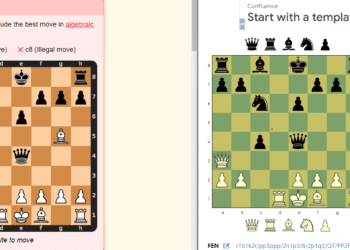Diablo 2 (D2) veteran players will agree that Diablo II Resurrected (D2R) is everything they loved about the classic and more. The new version is a significant upgrade to the original game -a fresh 3D remastering making up for an elevated cinematic experience like nothing original players would have anticipated.
While it may seem evident that veteran players would enjoy the new version more, the game’s ladder system has been designed to level the playing field for both old and new players.
It doesn’t matter if you’re playing the game for the first time; you get a fair shot at battling it out with experienced Diablo players to the top, thanks to the game’s unique ladder system. Still, the experience is nostalgic for players who’ve competed in the original version of the game, considering D2R is built from the roots of Diablo 2.
What Is a D2R Ladder?
Everyone participating in a D2R ladder quest is ranked competitively against other players in the same realm or class. The goal of the competition is to get to the top of the ladder quickly and collect as many D2R Ladder Items as possible. Generally, it would take a couple of months to successfully complete the quest, after which the season resets.
A ladder is simply a scoreboard keeping track of the top performers in each level based on:
- The number of items gathered during the quest
- Player experienced -how fast they gather their items
D2R Ladder Modes
D2R features four different ladder modes, including:
- Standard Ladder
- Hardcore Ladder
- Standard Expansion Ladder
- Hardcore Expansion Ladder
Standard Ladder
The Standard Ladder, or the classic ladder, is the easiest of all the four ladder modes. With this ladder mode, you’re able to play one brand new character through all the 4 acts available on the original Diablo 2 series. You’ll be able to acquire gear and upgrades as you advance through the levels.
Hardcore Ladder
The Hardcore Ladder is similar to the Standard Ladder but a little more challenging. You get only one life on this mode to play through all the 4four levels, unlike in the Standard Ladder.
So what happens when you die in combat?
Well, you guessed it right -your mission dies with you. Your only hope of completing this level after you’ve exhausted your life is creating a new character and giving it another try. Hopefully, you’ll have learnt your lesson, or a similar fate awaits.
Standard Expansion Ladder
The Standard Expansion Ladder is similar to the Standard Ladder, except it runs through 5 acts instead of 4. This mode encompasses content from Diablo 2’s Lord of Destruction expansion.
Hardcore Expansion Ladder
The Hardcore Expansion Ladder has the same features as the Hardcore Ladder but runs through 5 acts instead of 4. This mode also features content from Diablo 2’s Lord of Destruction expansion.
You get one life on this mode to take you through all the five acts. If you die before completing you quest, your mission dies, and your best chance of advancing through this level is creating a new character and making another spirited attempt.
When Did the New D2R Season Launch?
The D2R ladder season officially launched on April 28, 2022, to an overwhelming reception across the gaming world. For old players, the new season meant a nostalgic trip down the memory lane – kicking monster ass on their way to the top while savoring the new cinematic experience that came with the enhanced graphical upgrade.
Newbies, on the other hand, stare at the thrilling prospect of beating seasoned Diablo 2 legends who’ve been stripped off their stash of gear and wealth amassed in previous levels. It’s a thrilling fresh start for everyone, regardless of previous experience.
How D2R Ladder Works
If you participate in D2R, you’re ranked in a system where you start with no inventory or special skills adopted in previous quests. All players start off at the same level and advance gradually through success in the quest.
During the quest, your ranking against other players in the season is broadcasted on the leaderboard, where you can review your progress. Each ladder comes with varying rewards, features, and instructions that render your previous character obsolete.
Unfortunately, you’ll be forced to retire your favorite character at the end of every ladder or season to create a new one. As such, you won’t have leverage over new players in a new season, except maybe you’ll be a little more familiar with the game theme and features (not a bad thing to start with).
Well, it stings a little if you had quite the stash or you’d grown fond of your former character. But at least the thrill of a new adventure catches on rather fast. Plus, pretty sure you wouldn’t enjoy playing opponents way below your skill level either.
What Happens When the Season Resets?
As aforementioned, after a couple of months in battle, you’ll get a warning that the season is about to reset and equalize all the players. Naturally, you can’t graduate your hero to the next ladder, but that doesn’t mean it’s your last time seeing and playing them.
Your character is relegated or rather moved to the non-ladder version of the game. The character takes with them all the items and upgrades attained in the season, making them a nightmare to monsters and competition in the level.
What’s the Relationship Between the Ladder and Non-ladder Mode?
Why struggle to build a character that you can’t promote to the next season? What happens to the ladder items amassed and upgrades achieved in every ladder?
Well, before you decide against playing in the ladder version, understand that you cannot swap modes after you’ve made a choice to play in either version of D2R. The two versions come with different features and offer distinct perks for every successfully completed quest.
The ladder mode is hell competitive and ideal for players who want to find out how they stack up against others competing in the same ladder. This version of D2R is popular among players looking to collect the coveted ladder items. Of course, you can always buy D2R Ladder items whenever you’re not satisfied with your earnings in battle. The basic reward mechanics of D2R dictates that you can only move up the ladder by killing and defeating your enemies. Technically, the ladder items you collect in the various levels determine what you can do in the next level.
Features like ladder items, upgrades, and runewords can only be found on the ladder mode. And while you can’t graduate your character alongside every earned item and upgrade, they are not entirely lost at the end of the season -that’s where the non-ladder mode comes in.
Conclusion
The D2R ladder system is pretty straightforward once you get the hang of the game’s mechanics and reward systems. Basically, the system is designed to offer different competitive modes to play while giving a fresh start to all players -newbies, pros, and those who’ve had a tough previous season. While at it, the system preserves upgrades and ladder items earned in the season on the non-ladder mode.
As mentioned, you may opt for a non-competitive version of the game (non-ladder), but you’ll be missing out on the thrills and adventures of playing in a competitive realm. This article highlights the important aspects of D2R ranking system and how the different modes differ from each other. Understanding how the system works is critical in creating a working strategy on how you can climb to the top of the ladder fast.



















